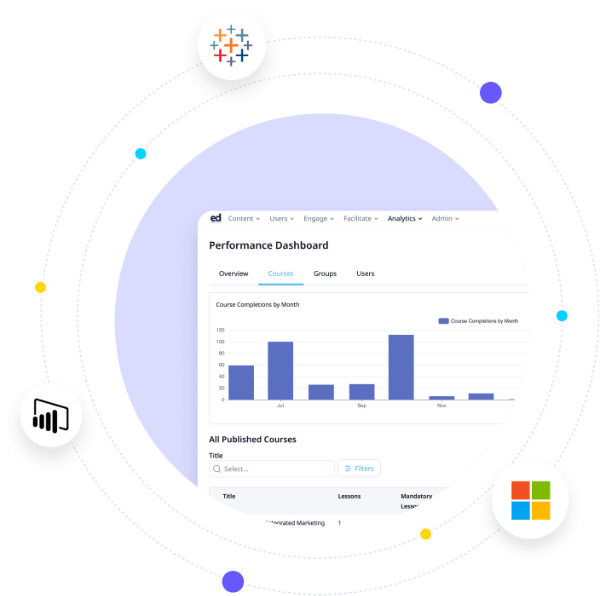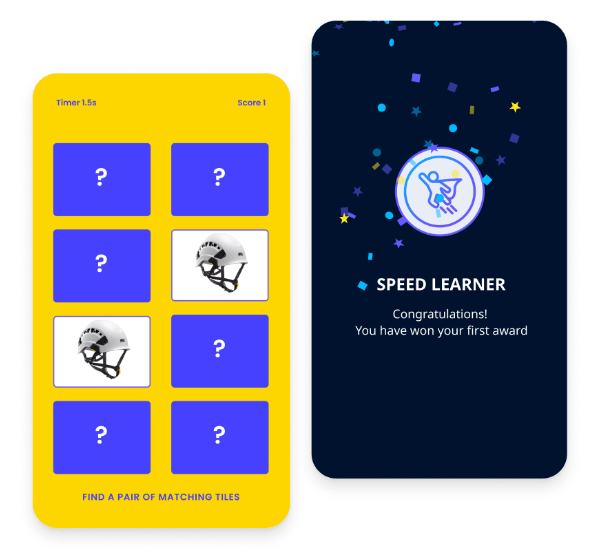10 Employee engagement strategies to improve your workplace

Employees are at the heart of every organization. Successful businesses put their employees first through effective employee engagement strategies that help teams remain committed to the work they do.
Sure, the fancy coffee machine in the office keeps you awake during long working hours. But no amount of caffeine can replace employee engagement. Empower your teams by going the extra mile and making sure they’re motivated, passionate, and engaged.
What is employee engagement?
Employee engagement is the level of connection that an employee has toward their work. Engaged employees possess a deeper sense of care and enthusiasm for what they do, so they pour extra effort into their work. This passion spreads throughout the organization, leaving a positive impact on the overall business.

Why is employee engagement important?
According to Gallup, employees who are not engaged or are actively disengaged cost the US about 1.9 trillion USD in lost productivity. Beyond profitability, here are more reasons why you should kickstart your employee engagement journey:
- Better work culture: Employee engagement fosters a contagious sense of satisfaction for one’s work. Engaged teams breed a healthy work culture that positively impacts your business and attracts valuable talents.
- Increased productivity and lower absenteeism: Engaged employees perform at their best because they find the work they do meaningful. In return, they also show up more compared to disengaged counterparts who tend to skip work due to stress.
- Improved employee retention: Happy and satisfied employees stick with you for the long haul. An engaging workplace leaves no reason to find a job somewhere else.
It takes two to tango when we talk about employee engagement. Your teams can’t help you if you don’t know how to help them. So we’ve done the brunt of the work for you. Here, we’ve listed 10 employee engagement best practices that you and your team deserve!
Employee engagement strategy #1 - Maximize the power of technology
The most effective employee engagement tool is already in the palm of your hands. With the surge of remote jobs and with plenty of innovative solutions available, organizations that use technology to engage employees are assured of ways to stay connected, regardless of location.

Make the most out of technology by taking advantage of software and apps that allow you to collect feedback, send announcements, facilitate real-time collaboration, and promote a culture of appreciation.
With many teams already hooked on their screens, leverage technology for employee engagement by using mobile-ready learning platforms like SC Training. Here, your teams have access to an editable course library with over 1,000 courses they can accomplish on the go.

Already have existing tools? SC Training’s flexibility allows you to work with software that you already love. You don’t have to worry about creating a seamless employee engagement experience with its in-built integrations feature that works with GSuite, Canva, BambooHR, and more.

You can also embrace tech solutions for your employee engagement program by making AI do the work for you. With AI-powered features like SC Training’s AI Create, you can generate courses for your next team training, minus the long brainstorming sessions.
Get started with the best tech solution for employee engagement. Join SC Training today.
Employee engagement strategy #2 - Gamify training
All work and no play makes Jack a dull boy, but what happens if we mix play and work? Boost employee engagement by injecting excitement into training so you can avoid boring and monotonous sessions.
Because employee engagement is based on internal motivations, gamifying training taps into that through motivators like competition, progress, and achievement. With gamification, teams don’t only actively participate, they also remember lessons better and come back for more fun training sessions.

Use quizzes, leaderboards, badges, and rewards to level up your employee engagement strategies with SC Training's gamification feature. Your teams will thank you later for workplace learning that’s double the fun with half the brain power required in traditional training.
Employee engagement strategy #3 - Create learning pods
Foster collaboration by letting your teams share ideas and learn from their peers through learning pods. Training in small groups allows people with diverse backgrounds and skills to come together.
Compared to larger settings, small learning pods give employees more opportunities to engage in discussions and ask questions. Interactions in supportive environments lift morale by deepening a person’s connection to their colleagues and the organization itself.
Dive into how collaboration fuels knowledge creation and improves employee engagement by checking out SC Training’s discussions feature. It allows participants to turn to a peer when they need to, while also giving you the chance to take the lead when necessary.

Employee engagement strategy #4 - Use a 360-degree feedback approach
Every voice counts. Consider getting input from different perspectives by using a 360-degree feedback approach. Hear from peers, managers, supervisors, and other possible sources to provide a more holistic assessment process.

When using a 360-degree approach, anonymity is encouraged for more open and honest feedback. Employees feel more comfortable giving constructive comments without fear of potential retaliation when feedback is given anonymously.
Not all feedback is created equal. With SC Training’s course on giving effective feedback, you can teach your teams to learn the what, why, and how of providing feedback to build trust and reach your goals.
Employee engagement strategy #5 - Craft a powerful onboarding journey
Onboardings make lasting impressions for employees. From the get-go, make sure that your teams know you genuinely care about them by making them feel valued and welcomed on day one.

An impactful onboarding program gives new hires a clear understanding of your organization’s values, policies, and culture. Training and mentorship should also be available as they adjust to their roles.
If you're still unsure of how to improve employee engagement with effective onboarding, SC Training offers an onboarding course perfect for retail settings.
Employee engagement strategy #6 - Open doors for growth
Help your teams find a sense of purpose and direction in their work by providing opportunities for growth. Employees who spot chances to move up the ladder within the company are more pumped up, dedicated, and engaged.

Growth does not always have to be vertical. Instead of ascending traditional career ladders, employees can also have new roles in an entirely different department. This way, you improve retention rates as employees don’t find the need to switch companies to take on something new.
Outside of career growth, effective employee engagement strategies also consider personal growth. E-learning management systems like SC Training offer many self-improvement courses. Explore this course on how to create, spot and take opportunities to help your teams with their professional upskilling and personal development needs.
Employee engagement strategy #7 - Set up mentorship and training programs
Training and mentorship do not end after the onboarding process. Avoid saying goodbye to key team players. Make sure they’re growing professionally by giving them opportunities to learn from mentors and leaders in your organization.

Good mentorship engages employees by providing guidance, teaching relevant skills, and helping mentees build confidence. If you want to get the most out of your mentor or you’re a mentor yourself, visit this SC Training course on mentoring.
Employee engagement strategy #8 - Conduct employee surveys
One way to ensure anonymity in gathering feedback using a 360-degree approach is to conduct employee surveys. Listen to what your teams have to say so you can identify strengths, improve on weaknesses, and drive change.

Surveys make employees feel heard. Ask them their views on employee satisfaction, career and personal growth, and employee engagement ideas they’ll enjoy. With SC Training’s creator tool, you can choose from more than 80 templates to cover all areas of concern with ease.
Employee engagement strategy #9 - Celebrate wins with digital badges
Let your employees know they did a great job. Make sure they’re aware that no effort goes unnoticed by awarding them with digital badges. When you recognize good work, you pave a path for your teams to follow in the future, while also boosting productivity and motivation.

Through SC Training’s Achievements feature, you can use banners and badges to celebrate your team’s win, no matter how big or small. It also gives you a centralized location to track achievements and assess the performance of every member of your team.
Employee engagement strategy #10 - Encourage a healthy work-life mix
One of the best ways to make sure your teams know you care for them is by letting them have the freedom to juggle work and personal life. You want your employees to thrive on and off the clock.

Finding the right balance between work and personal life is particularly difficult for people who work remotely. If you work from home and struggle to separate life from your job, this Work/Life Balance course on establishing routines, setting up your workspace, and drawing boundaries might be for you.
Work-life balance gives people enough time away from their work desks to go on breaks, recharge, or pursue passion projects. When people know that your organization cares about them as a person and not just an employee, they find more reasons to stay and give their best effort.
Create better employee engagement strategies with SC Training today. Sign up for free.
Author
Bea Garcia
Bea Garcia is a content writer for EdApp, a cutting-edge e-learning platform designed to democratize training. Beyond her writing desk, she spends her time trying out recipes and watching films.
